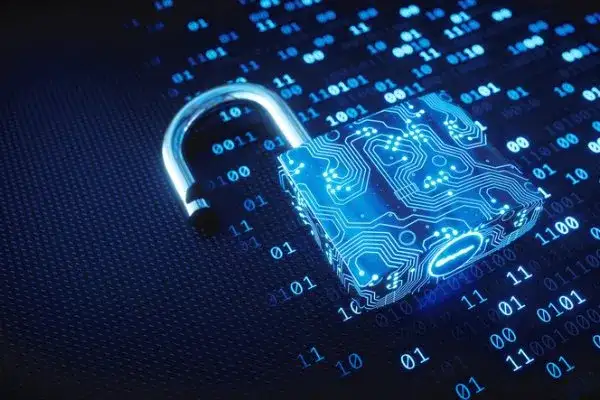The following guide explains the different Types of ESI, or Electronically Stored Information.
In the digital age, the legal world has evolved to include a significant focus on ESI (Electronically Stored Information).
As a result, understanding the different types of ESI is crucial in navigating the intricate landscape of digital forensics.
In this comprehensive guide, we’ll delve into the various types of ESI, providing you with the in-depth knowledge you need to effectively navigate the intricacies of electronic discovery or eDiscovery.

Understanding ESI
ESI, or Electronically Stored Information, is a legal term that refers to any data or documents created or stored on electronic media.
This information is often used as electronic evidence in legal proceedings. The Federal Rules of Civil Procedure in the United States outline the obligations of attorneys for the disclosure, review, and production of electronic documents relevant to litigation.
The Main Types of ESI
When discussing types of ESI, we’re referring to a broad range of data sources, which can include:
- Emails: These can be stored in various formats, such as PST (Personal Storage Table) files.
- Digital Documents: Word documents, spreadsheets, videos, image files, sound recordings, and business contracts created using dedicated software.
- Computer Data: Information stored on a user’s desktop computer, a company server, or a computer system.
- Hard Drive Data: Any data stored on a hard drive.
- Cloud Applications: Information stored in cloud services, such as Google Drive or Dropbox.
- Mobile Data: This encompasses metadata or messages from a cell phone.
- Internet of Things (IoT) Data: Information from IoT devices, such as smart home devices.
- Digital Recreations: Digital scans or other electronic recreations of physical documents.
ESI and Federal Regulations
The 2006 amendments to the Federal Rules of Civil Procedure included ESI as a newly defined legal term. Today, the legal world considers the discoverability of ESI, such as emails, commonplace.
Rule 34 of the Federal Rules of Civil Procedure (FRCP) allows the requesting party to inspect, copy, test, or sample any designated documents or ESI.
This includes writings, drawings, graphs, charts, photographs, sound recordings, images, and social media pages.
Expansion of Digital Technology and ESI
As digital technology and data usage continue to grow, eDiscovery has become a significant and evolving challenge associated with modern law.
eDiscovery includes identifying, collecting, producing, and preserving digital files and data relevant to a case. Without proper systems and processes in place, attorneys could spend a significant amount of time managing eDiscovery responsibilities.
Methods to Handle ESI Collection
There are various approaches to ESI collection. Law firms could seek assistance from a forensic services expert or handle ESI collection and technology processes internally. For instance, an entire email inbox or a subset can be exported natively to a PST file. Using eDiscovery solutions can expedite this process, reducing the time spent on tedious work.
Key Considerations while Collecting ESI
When collecting ESI, it’s crucial to consider the proportionality of the task at hand and the integrity of data collection. The electronic discovery request should be reasonable, considering the resources and time available to the legal team. A solid audit trail for any data storage, collection, or preservation efforts conducted is critical to maintain the integrity of the ESI.
ESI in Commercial Litigation
ESI plays a significant role in commercial litigation. All forms of ESI are discoverable in a lawsuit and must be preserved to prevent inadvertent or intentional spoliation. ESI discovery requires sifting through substantial data to retrieve evidence useful for trial purposes.
Preserving ESI: The Importance of a Litigation Hold Letter
A litigation hold letter is an essential tool in the preservation of ESI. This communication advises a party of their preservation duty and specifies the need to retain all relevant electronic information.
Consequences of Preservation Failure
Failure to preserve ESI can have serious implications, resulting in severe sanctions. These consequences can be avoided by taking proper measures and following protocol.
The Role of Legal Professionals in ESI
Understanding and managing ESI in commercial litigation can be complex, underscoring the importance of skilled legal counsel. Experienced attorneys can help navigate the ESI discovery process and all aspects of a legal case.
Frequently Asked Questions
What is ESI?
ESI stands for Electronically Stored Information. It is any type of information that is created, used, and stored in digital form. ESI can include a wide variety of documents and data, such as emails, text messages, social media posts, photographs, videos, and spreadsheets.
What are some common types of ESI?
Some common types of ESI include:
- Emails and attachments
- Text messages and chat logs
- Social media posts and messages
- Photographs and videos
- Documents in Microsoft Word, Excel, and PowerPoint
- Databases
- Cloud-based storage files
Where can ESI be stored?
ESI can be stored in a variety of places, including:
- Computer hard drives
- Network servers
- USB drives
- Cloud-based storage providers
- Mobile devices
- Social media websites
What is the legal significance of ESI?
ESI can be crucial in legal proceedings, such as lawsuits and arbitrations. In many cases, ESI can be used as evidence to support a party’s claims or defenses. For this reason, it is important to preserve ESI in a timely and secure manner.
How can I manage ESI?
There are several different ways to manage ESI. Some common methods include:
- Using a document management system
- Implementing a data retention policy
- Conducting regular data audits
- Using encryption to protect sensitive data
- Hiring a third-party ESI management vendor